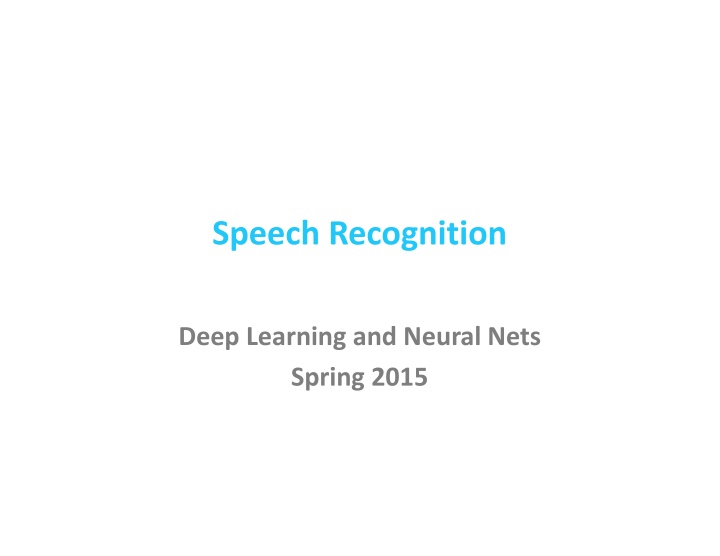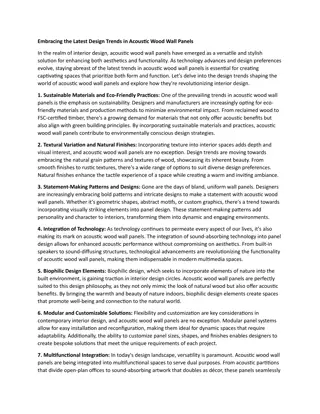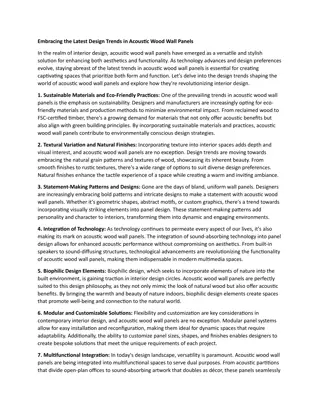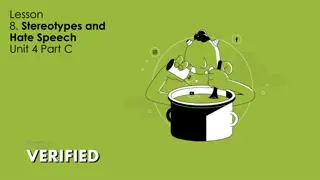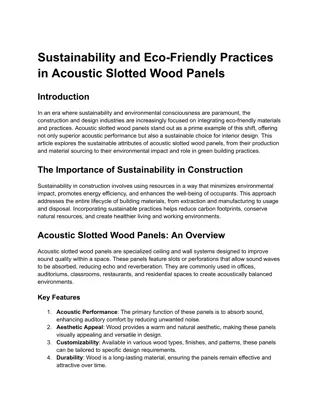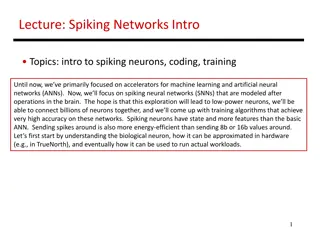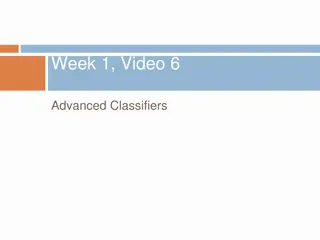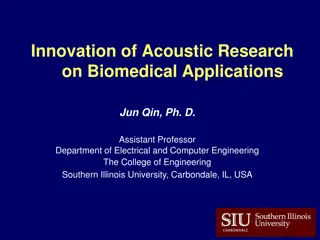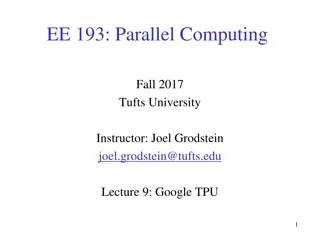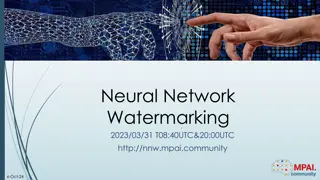Overview of Speech Recognition, Neural Networks, and Acoustic Models
This content delves into various topics such as speech recognition, deep learning, neural networks, and acoustic models. It covers the use of maxout networks, bootstrap aggregation, and explains why maxout works. Additionally, it explores the application of models like HMMs and discusses the differences between generative and discriminative models.
Download Presentation

Please find below an Image/Link to download the presentation.
The content on the website is provided AS IS for your information and personal use only. It may not be sold, licensed, or shared on other websites without obtaining consent from the author.If you encounter any issues during the download, it is possible that the publisher has removed the file from their server.
You are allowed to download the files provided on this website for personal or commercial use, subject to the condition that they are used lawfully. All files are the property of their respective owners.
The content on the website is provided AS IS for your information and personal use only. It may not be sold, licensed, or shared on other websites without obtaining consent from the author.
E N D
Presentation Transcript
Speech Recognition Deep Learning and Neural Nets Spring 2015
Microsoft Demo, Circa 2012 youtube video, start @ 3:10 for entertainment, turn on closed captioning
Acoustic Models Specify P(phoneme | audio signal) Instead of phoneme, typically some smaller phonetic unit that describes sounds of language allophone: one alternate way of pronouncing phoneme (e.g., p in pin vs. spin) context-sensitive allophones: even more specific ~ 2000- Instead of raw audio signal, typically some features extracted from signal e.g., MFCC mel frequency cepstral coefficients e.g., pitch
Acoustic Models Used With HMMs HMMs are generative models, and thus require P(audio signal | phoneme) Neural net trained discriminatively learns P(phoneme | audio signal) But Bayes rule lets you transform: P(audio | phoneme) ~ P(phoneme | audio) / P(phoneme) normalization constant doesn t matter Phoneme priors obtained from training data
Maxout Networks (Goodfellow, Warde-Farley, Mirza, Courville, & Bengio, 2013) Each hidden neuron i with input x computes hi(v)= max j [1,k]zij zij= vk+bij wijk Each hidden neuron performs piecewise linear approximation to arbitrary convex function includes ReLU as special case
Maxout Results MNIST nonconvolutional model 2 fully connected maxout layers + softmax output
Digression To Explain Why Maxout Works Bagging (Breiman, 1994) Dropout (Hinton, 2012)
Bootstrap Aggregation or Bagging (Breiman, 1994) Given training set of size N Generate M new training sets of size N via bootstrap sampling uniform sampling with replacement for large N, ~63% unique samples, the rest are duplicates Build M models For regression, average outputs For classification, voting source: wikipedia
Dropout What is dropout? How is dropout like bagging? dropout assigns different examples to different models prediction by combining models How does dropout differ from bagging? dropout shares parameters among the models models trained for only one step
Dropout And Model Averaging Test time procedure use all hidden units divide weights by 2 With one hidden layer and softmax outputs, dropout computes exactly the geometric mean of all the 2H models What about multiple hidden layers? approximate model averaging with nonlinear hidden layers exact model averaging with linear hidden layer
Why Do Maxout Nets Work Well? Multilayered maxout nets are locally linear -> dropout training yields something very close to model averaging multilayered tanh nets have lots of local nonlinearity same argument applies to ReLU Optimization is easier because error signal is back propagated through every hidden unit With ReLU, if the net input < 0, the unit does not learn Gradient flow is diminished to lower layers of the network
Improving DNN Acoustic Models Using Generalized Maxout Networks (Zhang, Trmal, Povey, Khudanpur, 2014) Replace hi(v)= max j [1,k]zij with soft maxout k hi(v)= log exp(zij) j=1 or p-norm maxout 1/p k p hi(v)= zij j=1
Testing LimitedLP 10 hours of training data in a language FullLP 60 or 80 hours of training Bengali LimitedLP Performance measures WER: word error rate ATWV: actual term weighted value
DeepSpeech: Scaling Up End-To-End Speech Recognition (Ng and Baidu Research group, 2014) 50+ yr of evolution of speech recognition systems Many basic tenets of speech recognition used by everyone specialized input features specialized intermediate representations (phoneme like units) acoustic modeling methods (e.g, GMMs) HMMs Hard to beat existing systems because they re so well engineered Suppose we toss all of it out and train a recurrent neural net
End-To-End Recognition Task Input speech spectrogram 10 ms slices indicate power in various frequency bands Output english text transcription output symbols are letters of english (plus space, period, etc.)
Architecture softmax output one output per character 1 layer feedforward combining forward and backward recurrent outputs 1 recurrent layer recurrence both forward and backward in time striding (skipping time steps) for computational efficiency 3 layers feedforward ReLU with clipping (max activation) 2048 neurons per hidden layer 1st hidden layer looks over local window of time (9 frames of context in either direction)
Tricks I Dropout feedforward layers, not recurrent layer 5-10% Jitter of input translate raw audio files by 5ms (half a filter bank step) to the left and right average output probabilities across the 3 jitters Language model Find word sequences that are consistent both with net output and an 4-gram language model
Tricks II Synthesis of noisy training data additive noise noise from public video sources Lombard effect speakers change pitch or inflections to overcome noise doesn t show up in recorded data since environments are quiet induce Lombard effect by playing loud background noise during data collection Speaker adaptation normalize spectral features on a per speaker basis
Tricks III Generating supervised training signal acoustic input and word transcription needs to be aligned or define a loss function for scoring transcriptions produced by network without explicit alignment CTC connectionist temporal classification (Graves et al., 2006) provided this loss function
Switchboard corpus SWB is easy bit CH is hard bit FULL is both Data sets
Noisy Speech Evaluation set 100 noisy and 100 noise-free utterances from 10 speakers noise environments background radio or TV, washing dishes, cafeteria, restaurant, inside car while driving in rain
